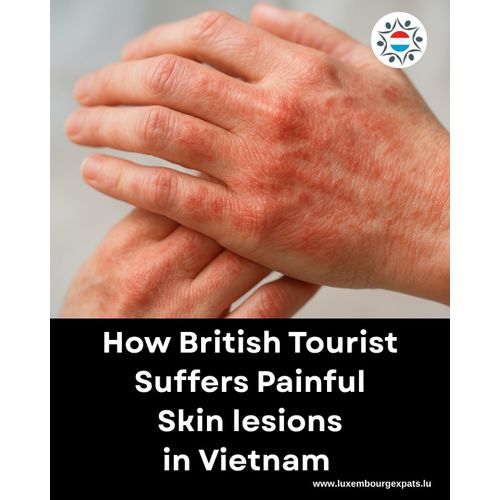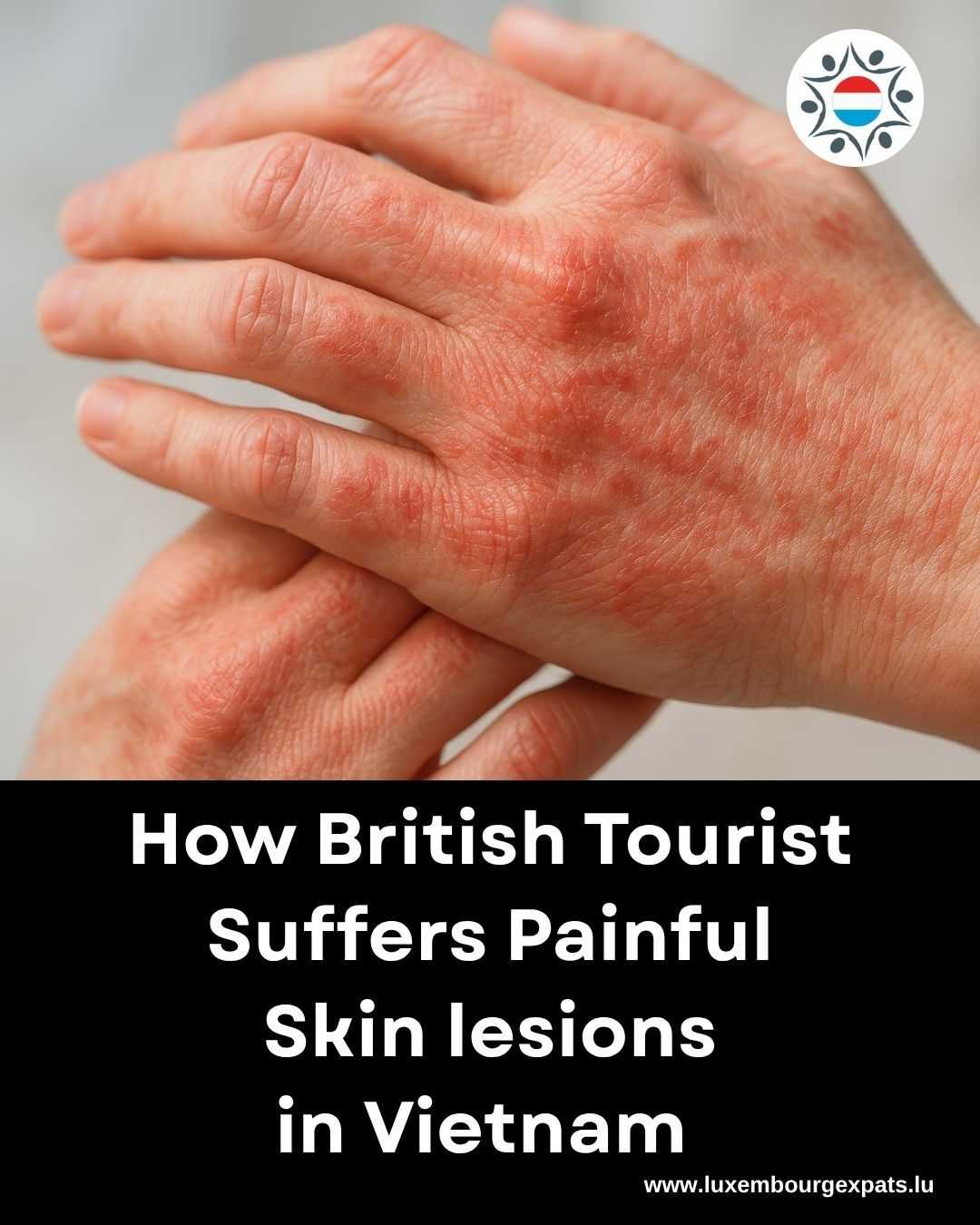British Tourist Suffers Painful Skin Sores in Vietnam
LuxembourgPosted on 03 November 2025 by TeamA British backpacker’s dream trip through Asia took a frightening turn when she woke up in Vietnam covered in painful sores and blisters — the result of contact with a venomous beetle known for its toxic secretions.
22-year-old Ellise, who has been documenting her travels across Asia on social media, had journeyed through Indonesia, Malaysia, Singapore, and Thailand before arriving in rural Vietnam. One morning, she woke up feeling unwell — feverish, nauseous, and with a throbbing headache. But what alarmed her most was what she saw in the mirror: her skin was covered in sores, some already oozing and blistering.
“I had no idea what was happening,” she explained in a TikTok video that has since gone viral. “I just woke up and saw these burns spreading across my face and body.”
With limited access to medical care in the remote area where she was staying, Ellise initially sought help at a local pharmacy. The pharmacist, puzzled by the symptoms, sent photos of her lesions to a dermatologist — who quickly identified the culprit: Paederus fuscipes, a toxic beetle common in Southeast Asia.
The hidden danger of the “Nairobi fly”
Often mistaken for an ant due to its slender body, the Paederus beetle — sometimes called the “three-chambered ant” or “Nairobi fly” — does not bite or sting. However, when crushed or brushed against human skin, it releases a potent chemical toxin known as pederin. This substance can cause severe irritation, chemical burns, and blistering dermatitis.
According to the U.S. National Library of Medicine, pederin exposure can lead to intense inflammation and skin lesions lasting up to several weeks. The toxin’s effects worsen when the beetle is rubbed into the skin — often during sleep, when victims unknowingly crush the insect.
These beetles tend to appear in large numbers during Vietnam’s rainy and humid monsoon season, when the warm, moist climate boosts their population.
Quick treatment and recovery
After diagnosis, Ellise was prescribed topical creams, antibiotic ointments, and oral medication to reduce infection and inflammation. Within five days, her condition had improved dramatically. “I’m really happy with how my face has healed,” she said in a follow-up video. “Luckily, it doesn’t seem like I’ll have any scars.”
Her story has since gone viral, drawing attention to a little-known tropical health hazard faced by travelers in humid regions. Experts advise tourists visiting Southeast Asia to avoid crushing unknown insects on their skin, especially at night, and to seek immediate treatment if burns or sores appear.
What began as a terrifying medical mystery for Ellise has become a cautionary tale for fellow travelers — a reminder that even the tiniest creatures can pack a powerful sting.
Read More: Vietnam: une touriste britannique se réveille avec des plaies dues à un insecte venimeux - L'essentiel
Join the community of your own - #1 home-grown LuxExpats app
SignUp Free : luxembourgexpats.lu
I am your contact
Team
Chat









